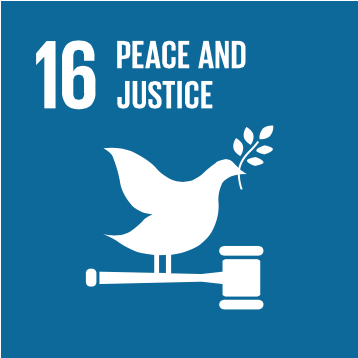
Lena Kähler and Maria Kristiansen
While the UN and State leaders are preparing for the September Summit, which will give life to the hard fought 2030 Agenda, the world is facing a refugee crisis in which millions of people are fleeing conflict and war resulting in “the worst migration crisis since World War II” in Europe.1
While heated debates over the causes for—and the proper terminology to describe—the large numbers of people arriving each day, politicians are fighting amongst themselves trying to reach an agreement distributing refugees between States.
With the ongoing civil war in Syria and long-term crises in several other countries, the current figure of nearly 20 million refugees is unlikely to decline in the foreseeable future.2 More than half these refugees are below the age of 18, and are forced to live in irregular situations. They lack access to underlying determinants of health such as food, water, sanitation and security, and to essential health care services, which are particularly important for vulnerable populations such as women and children.
With the Sustainable Development Goals (SDGs) being largely silent on the situation faced by the millions of refugees, including their right to health, special attention from States is needed to ensure that these vulnerable people will not be left behind when the 2030 Agenda is implemented. This entails concerted efforts to ensure the right to health both for internally displaced populations and for the millions of people who are transgressing national borders in their often dangerous and desperate search for security. Regional differences in resources as well as the magnitude of the current refugee crisis underscore the need for resolute global action. Whereas Europe in the first nine months of 2015 has received 350,000 refugees, Syria’s neighboring countries continue to struggle with much larger numbers—Turkey has an estimated 1.9 million refugees and Lebanon 1.2 million.3 The enthusiasm and aspiration expressed by State leaders ahead of the 2030 Agenda adoption—the unique focus on universality and equity—occurs while millions of refugees residing at State borders or displaced within countries are in desperate need of similar attention and focus.
When it comes to health, international human rights law is fairly clear. States have a joint and individual responsibility—to the maximum of their capacities—to provide assistance to refugees in times of emergency and to respect the right to health by refraining from limiting access to preventive, curative and palliative health services for asylum seekers.4 While SDG 3 on health is not presenting an explicit reference to the right to health, the outcome document on the 2030 Agenda states that “to promote physical and mental health and well-being, and to extend life expectancy for all, we must achieve universal health coverage and access to quality health care. No one must be left behind”.5 To cement the inclusiveness, refugees alongside other vulnerable groups are explicitly mentioned as “those whose needs are reflected in the Agenda”.6
The UN Secretary General puts it clearly in his Synthesis Report; the 2030 Agenda “must not exclude migrants, refugees, displaced persons or persons affected by conflict and occupation”.7 States must recognize the right to health irrespective of immigration status, thus ensuring access to health services and the underlying determinants of health such as food and water. As Dr. Zsuzsanna Jakab, WHO Regional Director for Europe, has stated: “Adequate standards of care for refugees and migrants into Europe are not only important for population health but are fundamental for protecting and promoting their human rights”.8 If States are serious when shortly they commit to a 2030 Agenda founded on international human rights law and with a catchphrase of “leaving no one behind”, then special attention must be given immediately to the millions of refugees at risk of indeed being left behind.9
Authors
Lena Kähler, MSc, is a consultant in public health
Maria Kristiansen, PhD, MSc is Associate Professor and Research Group Leader, Center for Healthy Aging, Faculty of Health and Medical Sciences. Department of Public Health, University of Copenhagen, Denmark
References
1 UNHCR news stories, World Refugee Day: Global forced displacement tops 50 million for first time in post-World War II era, 20 June 2014
2 Lancet editorial, Adapting to migration as a planetary force, vol. 386, No.9998, p1013, 12 September 2015
3 ibid
4 General Comment No. 14, the right to the highest attainable standard of health, 2000
5 Transforming our World: The 2030 Agenda for Sustainable Development, Finalised text for adoption, August, 2015. Available at: https://sustainabledevelopment.un.org/content/documents/7891Transforming%20Our%20World.pdf
6 ibid
7 Synthesis Report of the Secretary-General On the Post-2015 Agenda, The Road to Dignity by 2030: Ending Poverty, Transforming All Lives and Protecting the Planet, December 2014
8 Statement by Dr Zsuzsanna Jakab, WHO Regional Director for Europe, Population movement is a challenge for refugees and migrants as well as for the receiving population. September 2015 Available at: http://www.euro.who.int/en/health-topics/health-determinants/migration-and-health/news/news/2015/09/population-movement-is-a-challenge-for-refugees-and-migrants-as-well-as-for-the-receiving-population
9 see note 5
Previous papers published by Maria Kristiansen in the Health and Human Rights Journal
The Health of Low-Income Migrant Workers in Gulf Cooperation Council Countries
